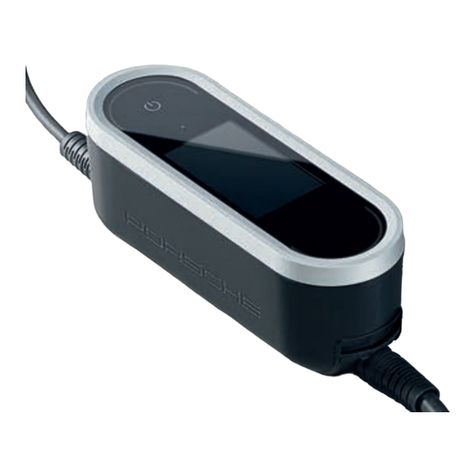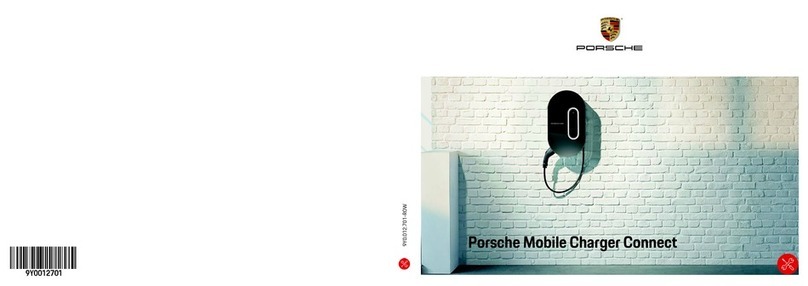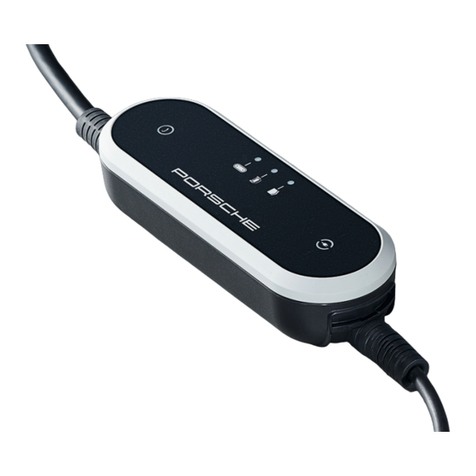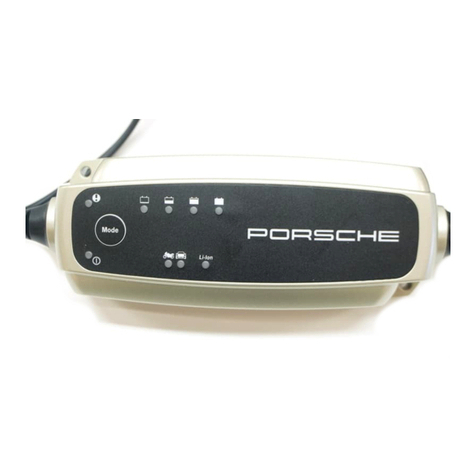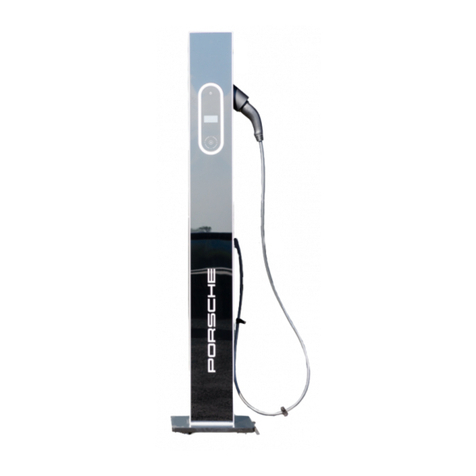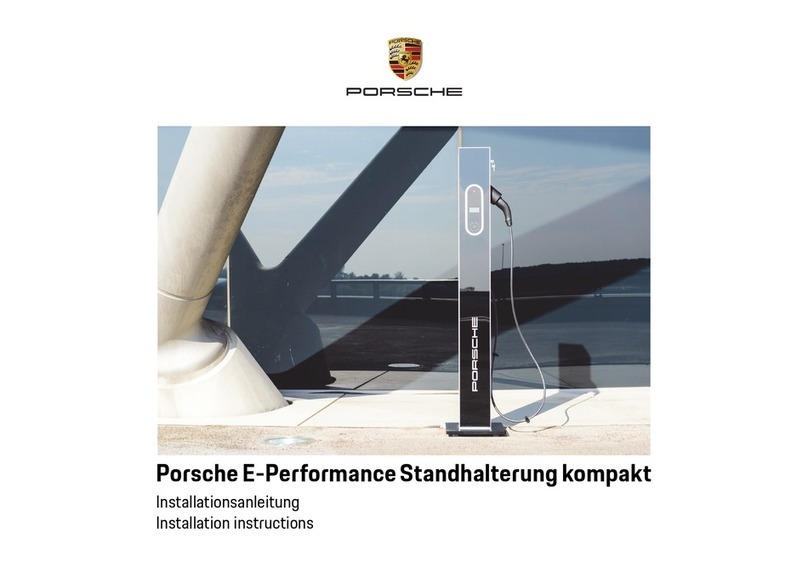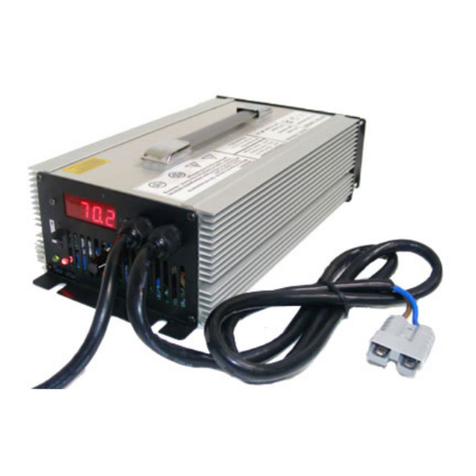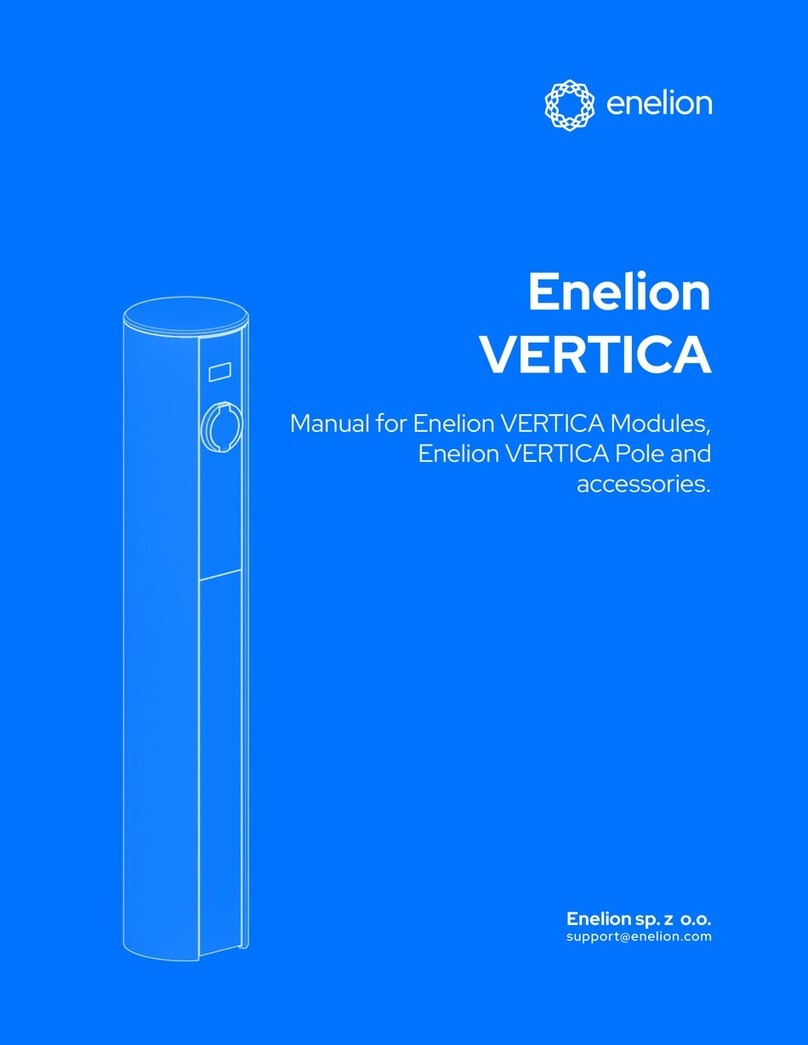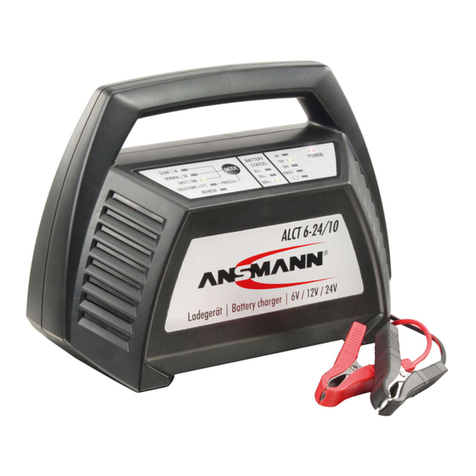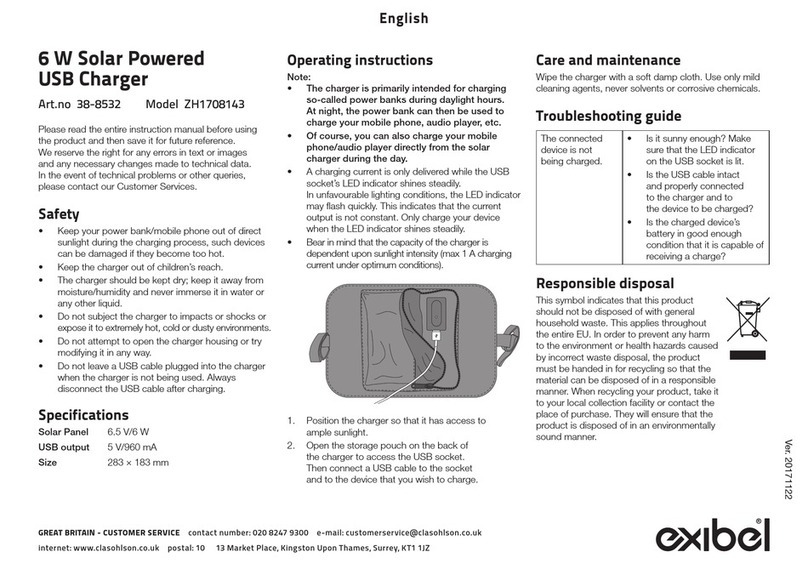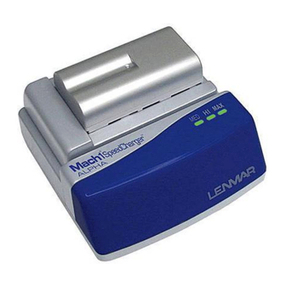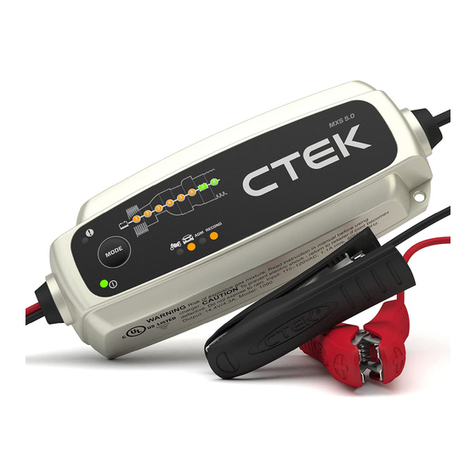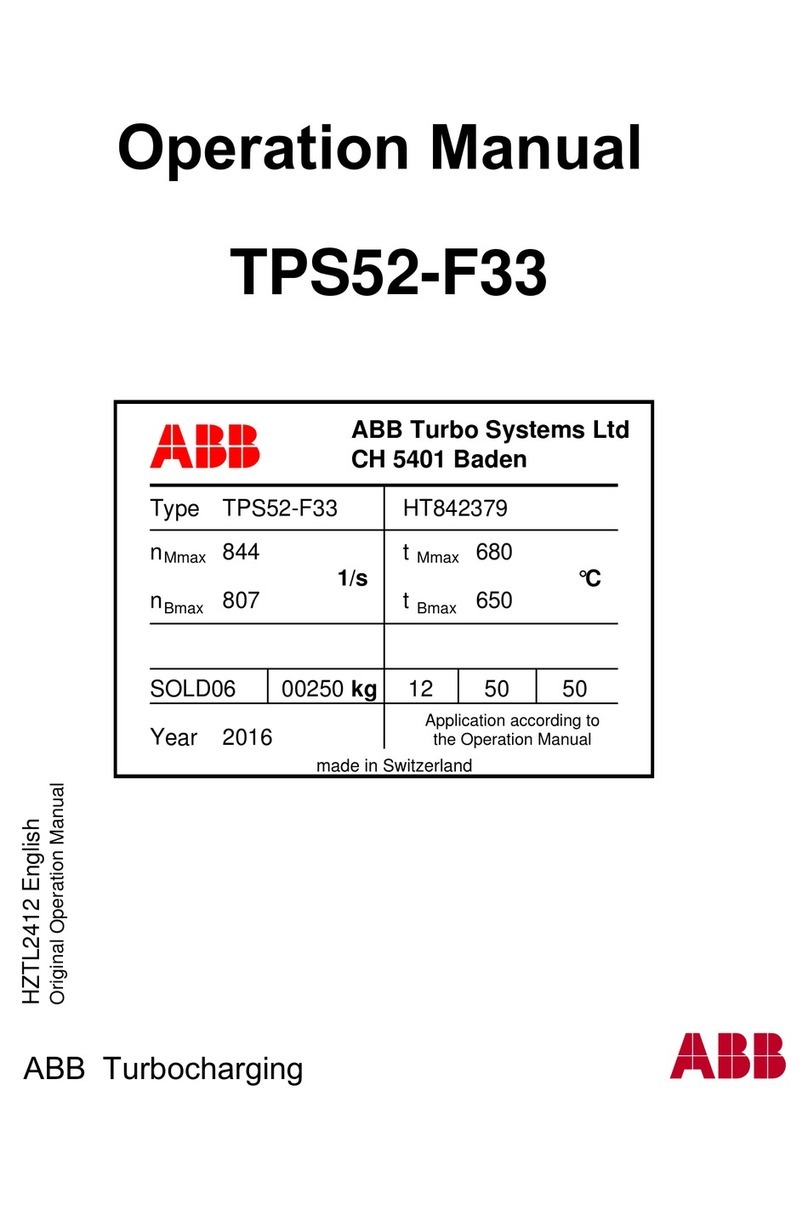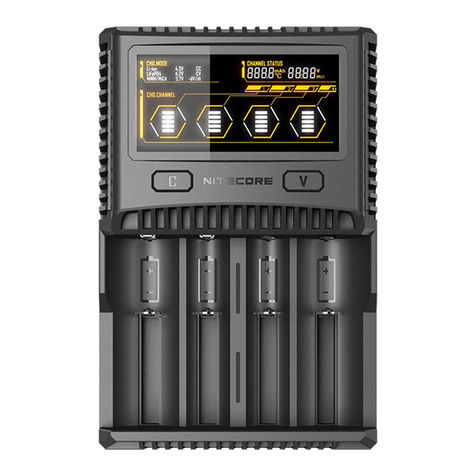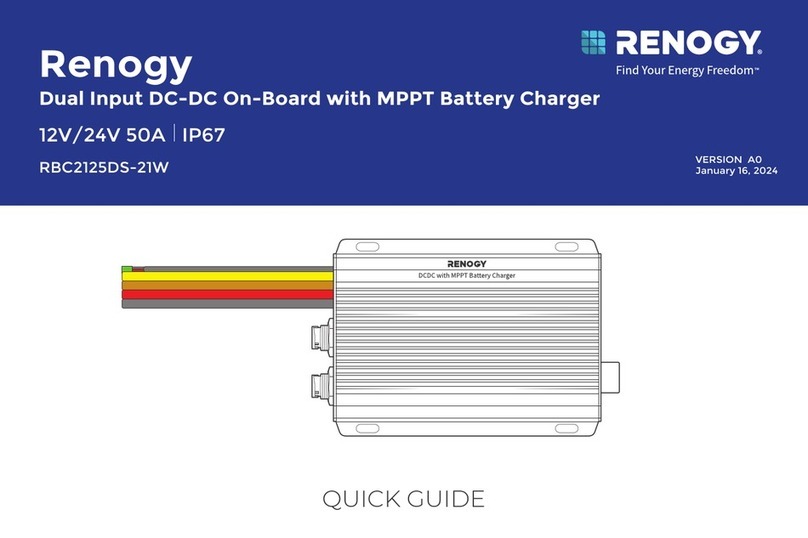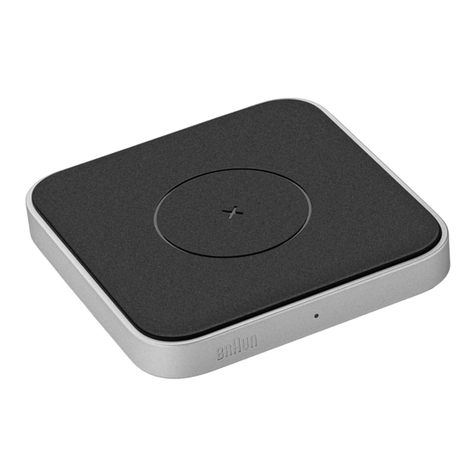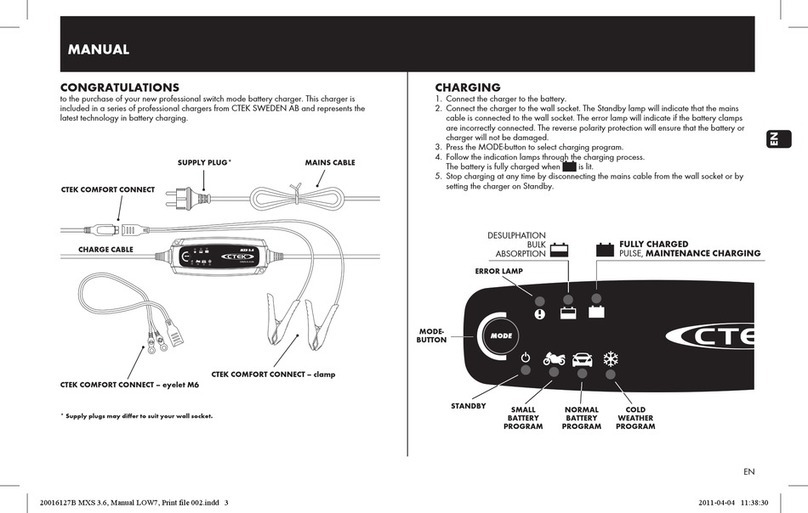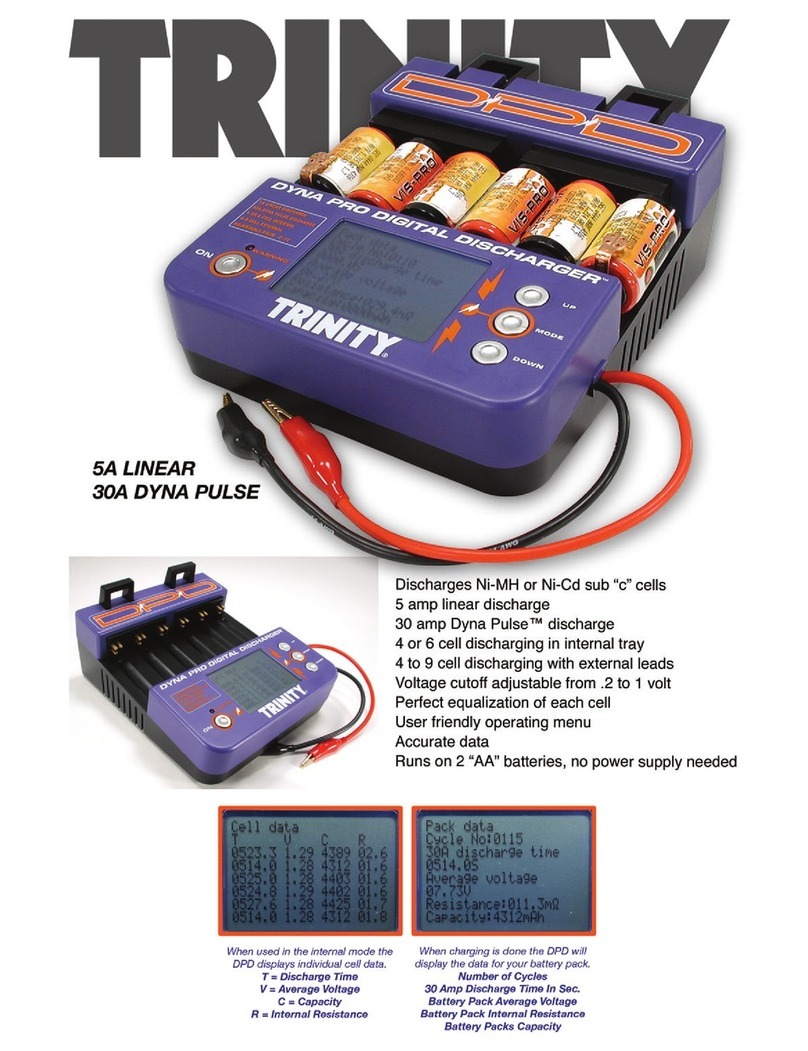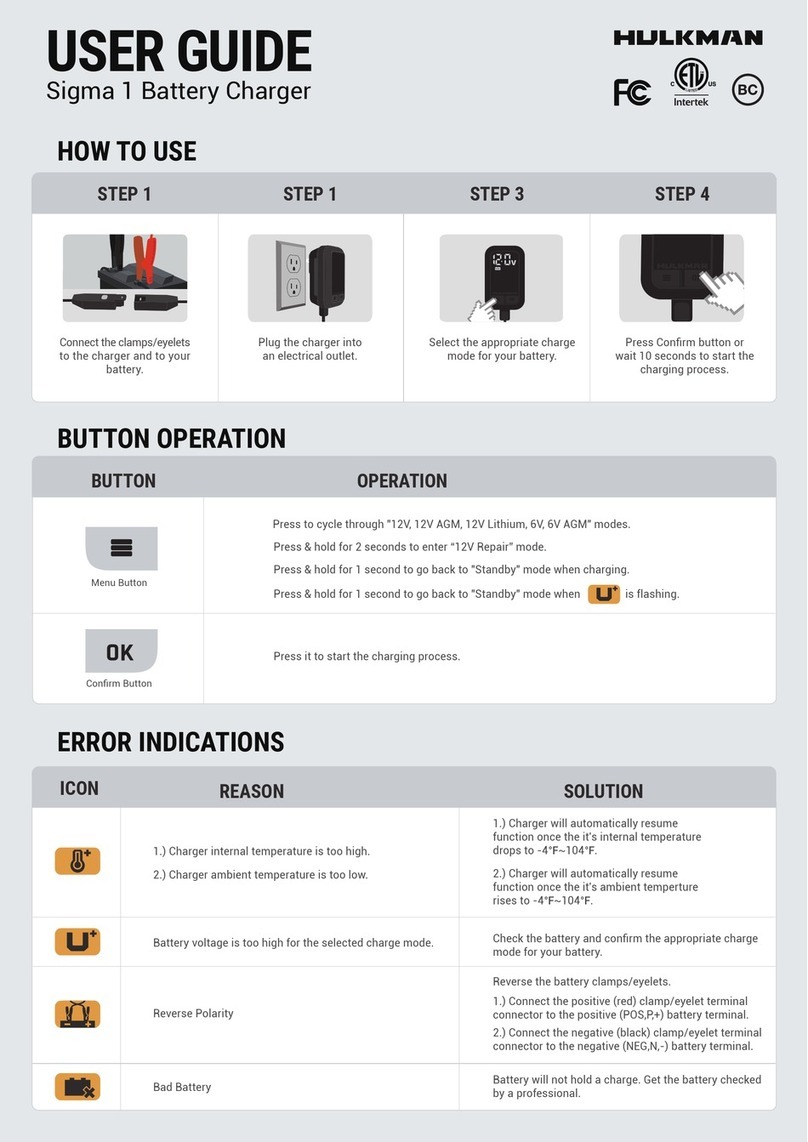
4
Operating Instructions
US
FC
ESM
PTB
TR
RU
UK
MON
VIE
HE
AR
JPN
KOR
CHS
CHT
THA
If this equipment does cause harmful interference to
radio or television reception, which can be deter-
mined by turning the equipment off and on, the user
is encouraged to try to correct the interference by
one or more of the following measures:
– Reorient or relocate the receiving antenna.
– Increase the separation between the equipment
and receiver.
– Connect the equipment into an outlet on a circuit
different from that to which the receiver is
connected.
– Consult the dealer or an experienced radio/TV
technician for help.
Modifications not expressly approved by the
manufacturer could void the user’s authority to
operate the equipment under FCC rules.
To ensure uninterrupted charging, take the following
notes and recommendations into account:
– Before installing the charging infrastructure,
check that the necessary power for charging a
vehicle can be continuously provided with the
currently available domestic installation.
If necessary, protect the domestic installation
with a Home Energy Management System.
– When installing the electrical socket, select an
industrial electrical outlet with the highest
possible power available (adapted to the
domesticelectricinstallation) and haveitputinto
operation by a qualified electrician.
– Where technically possible and legally permis-
sible, the electric installation must be dimen-
sioned in such a way that the maximum nominal
powerofthe electrical socketusedisavailablefor
charging the vehicle.
– In order to fully exploit the performance of the
charger and to ensure fast vehicle charging, use
either NEMA electrical sockets with the
maximum rated current or industrial electrical
outlets according to IEC 60309 forcharging.
– When charging the high-voltage battery via the
household electrical outlet/industrial electrical
outlet, the electrical installation may be loaded to
itsmaximumcapacity. Itisrecommended to have
electrical installations used for charging regularly
checked by an electrically skilled person. Ask a
qualified electrician which inspection intervals
are appropriate for your installation.
– On delivery, the charging current is automatically
limited to prevent overheating of the electrical
installation. Have a qualified electrician put the
charger into operation and set the charging
current limiting in accordance with to the
domestic installation.
fRefer to chapter “Charging Current Limiting”
on page 8.
Grounding instructions
Charger must be grounded.
If it should malfunction or break down, grounding
provides apath ofleast resistance for electric current
to reduce the risk of electric shock.
The chargeris equipped with a cord having an equip-
mentgroundingconductorand a grounding plug.The
plug must be plugged into an appropriate outlet that
isproperlyinstalledandgroundedinaccordancewith
all local codes and ordinances.
Intended Purpose
Charger for operation in charging mode 2 for
charging vehicles with high-voltage batteries, which
meet the generally applicable standards and direc-
tives for electric vehicles.
Keyto Pictograms
Depending on the country, various pictograms may
be attached to the charger.
Electric shock, short
circuit
Improper connection of the equipment-grounding
conductor is able to result in a risk of electric shock.
eCheckwitha qualified electrician orserviceman if
you are in doubt as to whether the product is
properly grounded.
eDo not modify the plug provided with the product
- if it will not fit the outlet, have a proper outlet
installed by a qualified electrician.
Operate the charger within a
temperature range from –22 °F to
+122 °F (–30 °C to +50 °C).
Operate the charger at an altitude
ofmax.13,100 ft (4,000 m)above
sea level.
The charger is equipped with a
non-switched ground lead.
The charger is equipped with a
switched ground lead.
Dispose of the charger in compli-
ance with all applicable disposal
regulations.
9Y0.000.003.B-ROW.book Page 4

